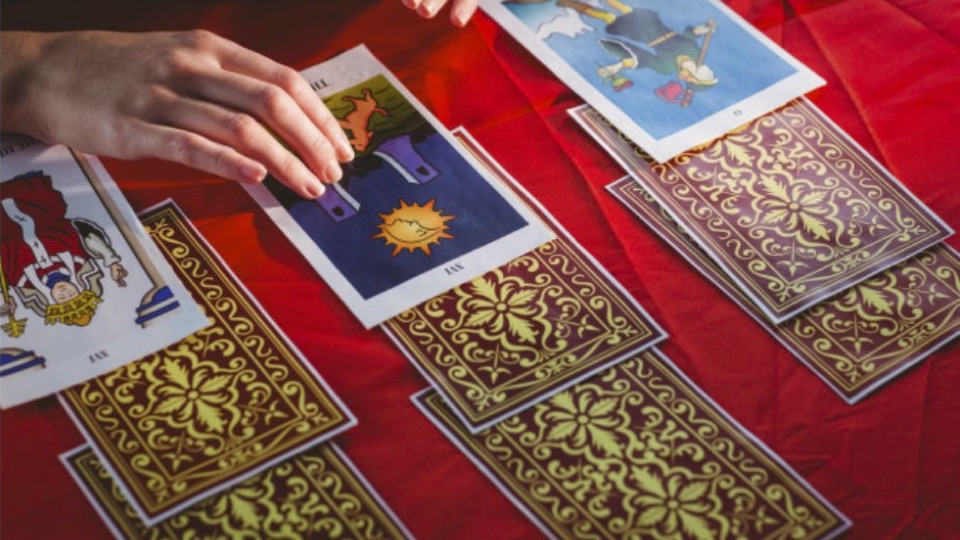Tarot cards have a weird reputation. We’ve all seen movies where a creepy old woman pulls out a card and says that the main characters are doomed. We’ve seen psychic shops or websites with posters saying, “Find how you’ll meet your soulmate!!!”
With such dramatic marketing, it can come as a surprise that Tarot isn’t like that — at all.
Tarot is, first and foremost, a very old method of seeking advice. And in the world’s current climate, who doesn’t need some of that? Each of the 78 cards in the standard deck has its own meaning, and each card we pull from the deck tells us to keep something in mind, be aware of an upcoming event, or guide us gently to change.
Related: “Adult Coloring Books: A Creative Way to Mindfulness”
We may pull the Ace of Wands, which tells us that our passions are beginning to burn anew and that we are at the start of a creative journey. We may pull the Three of Swords, which warns us of self-inflicted pain. No matter what kind of guidance we may need, Tarot will give you some helpful insight, the same way a friend will lend you an ear.
At this point, I want to strongly stress that Tarot is NOT “evil.” It’s been around for centuries and is considered a tool for helping us grow practically and spiritually. Free will is at the heart of a reading (meaning: you can either take the advice or not), and that’s where Tarot cards got their bad rap. Back in the day, the church was the Last Word. Tarot puts you in charge, so you see where this is going…)
Anyway, if you’re curious, here’s a simple one-card method that will ease you into the practice and help you explore possible solutions to pretty much anything.
Tarot decks are readily available and come with many designs. I suggest going with one that appeals to your eye; the meanings of each card don’t change even if the illustrations are different. But a design that speaks to you can really help you “decode” the information.
OK, with a new deck, I recommend going through each card to just look at the images. It’s kind of like breaking in a pair of new jeans. Take your time and get familiar with your deck. Even if you don’t yet understand the full meaning of the cards, there’s so much symbolism that speaks to us on a subconscious level. The colors and images have something to say, so don’t be intimidated. Just pay attention to how each card makes you feel.
Next, shuffle the deck thoroughly. It doesn’t matter if a card gets turned upside-down; it just means that you’re dealing with the opposite (more or less) of the original meaning. While you’re shuffling, ask a simple question (you don’t have to say it out loud). Shuffle the deck with the intent of wanting a helpful answer, and once you feel that the moment is right, stop.
Cut the deck any way you see fit, and draw the top card with your non-dominant hand (the one you don’t write with). Voila! There’s your one-card draw.
Now that you’ve drawn your card, spend however long you like looking at the card, and taking in its imagery. Don’t think too hard – see where the card takes you. There are some general meanings for each suit: Wands denote your passions, your creativity, and the things you choose to do with your life. Swords denote your psychology, Cups are your emotions, and Pentacles (sometimes called Coins) reflect your material life and possessions.
The Major Arcana, or face cards, denote phases in a person’s life. However, the meaning of your card is dependent on the question you’re asking, and, most importantly, what you feel. It might be helpful to jot down your impressions, because –frankly — some things may not make sense at the time. Checking back later may reveal something new.
Remember: these cards are wholly subjective, and none of them mean that you are in danger. To reiterate, there is nothing “evil” about Tarot. The main idea behind this spiritual tool is to help us reach and grow ever-higher.
Even the Death card, which on its face can be alarming, only means that something is ending or you’re in for a rebirth. Also, remember that you can take these readings with a grain of salt. Sometimes, you get advice that you don’t need. Just like anything else, Tarot can miss the mark. It can also take a few readings to get comfortable with the imagery and the process, so if your first few readings are wonky, give it some time.
Tarot is, at its core, a way of organizing your thoughts and seeing a different way forward. It’s one way to gain insight into some steps you can take to make your world a little less confusing.
(And it’s a lot of fun!)
-Emma Steen
Photo: Priyankabeawar via Wikimedia Commons


0 comments on “An Ancient Tool for Growth (and An Easy Way to Use It)”